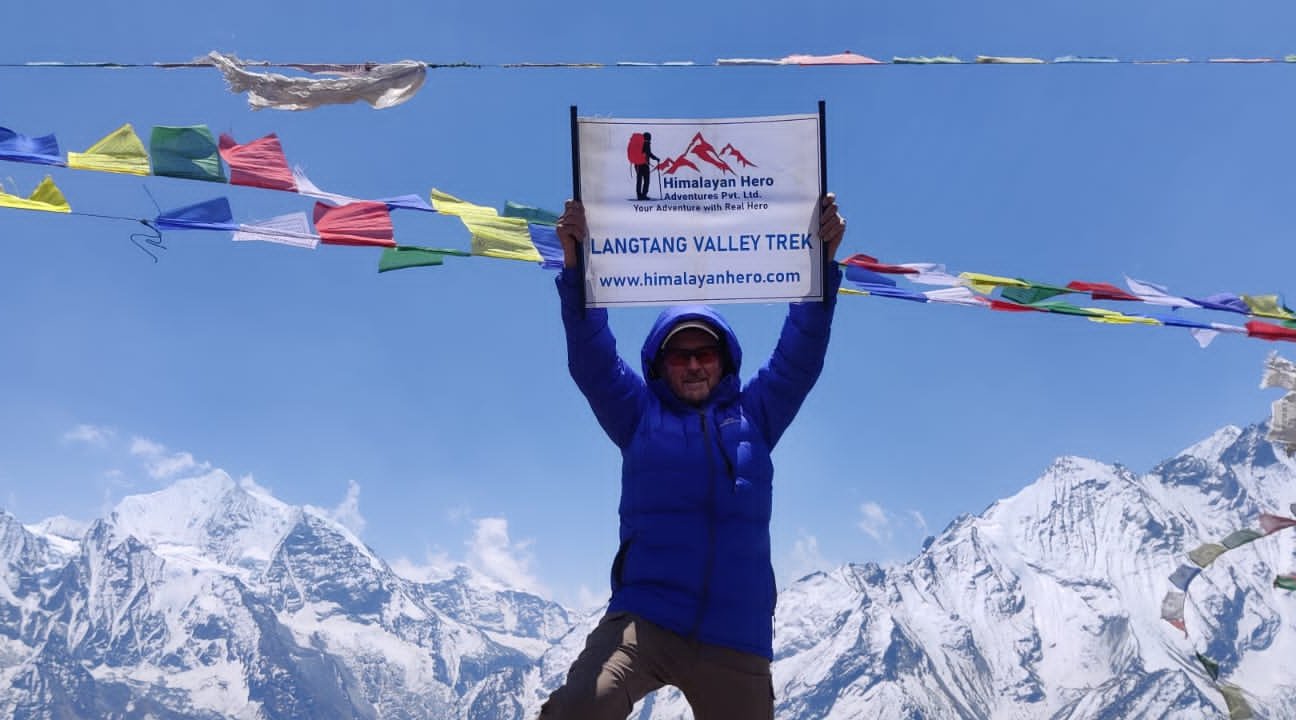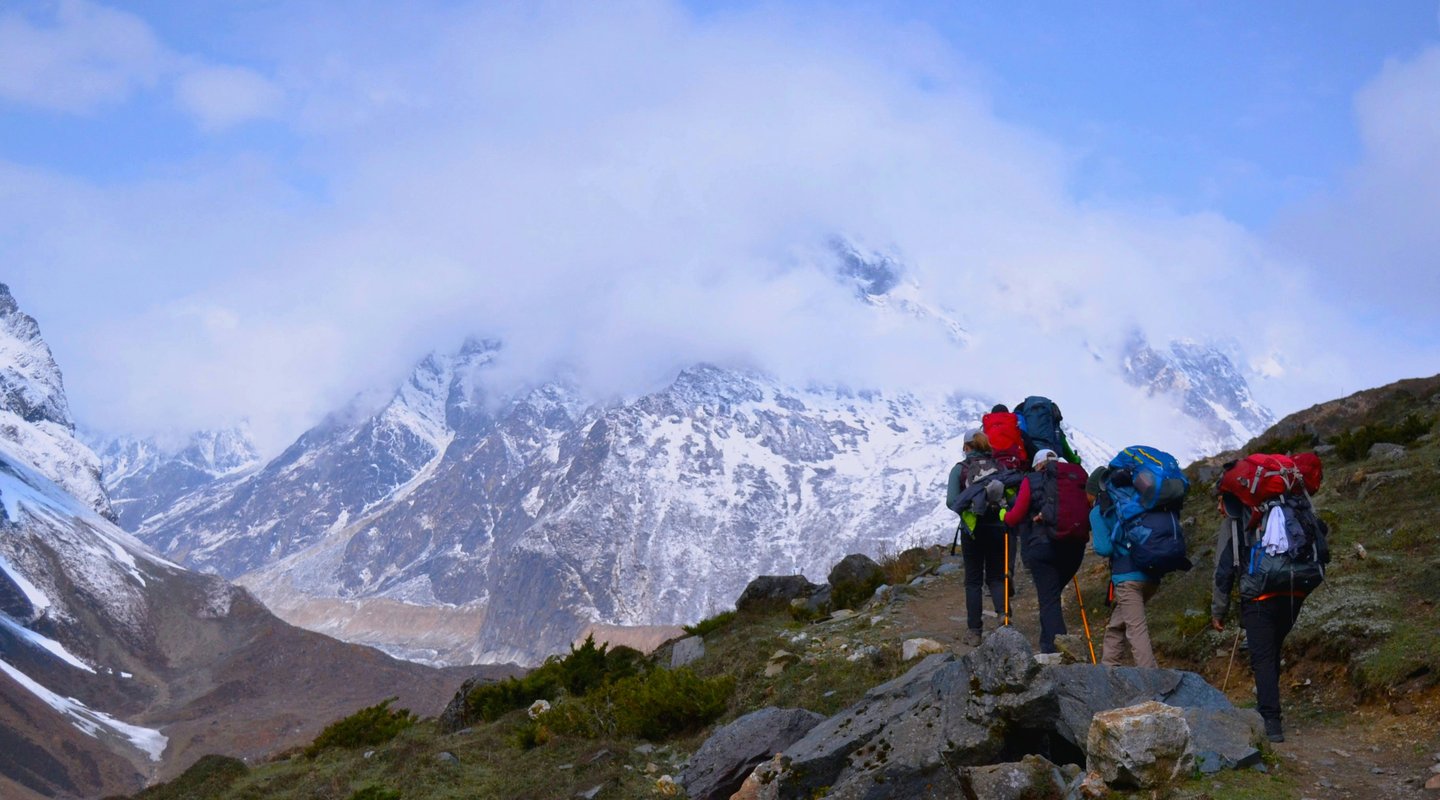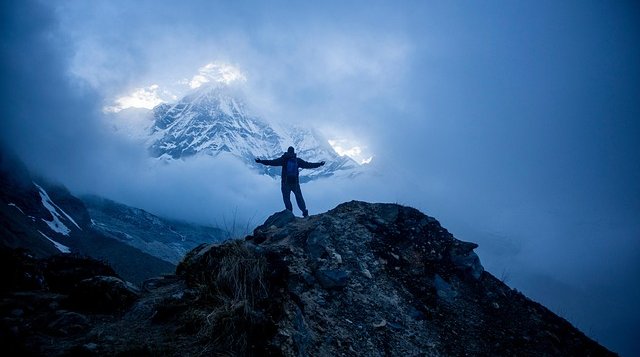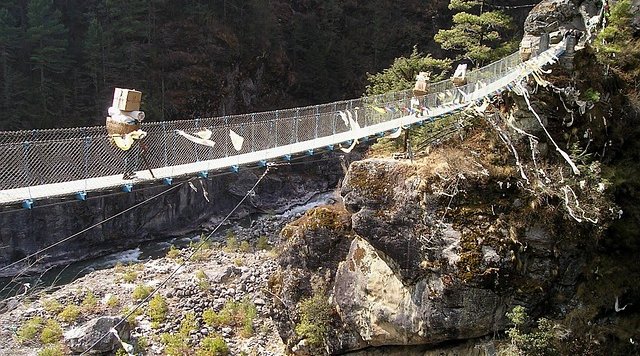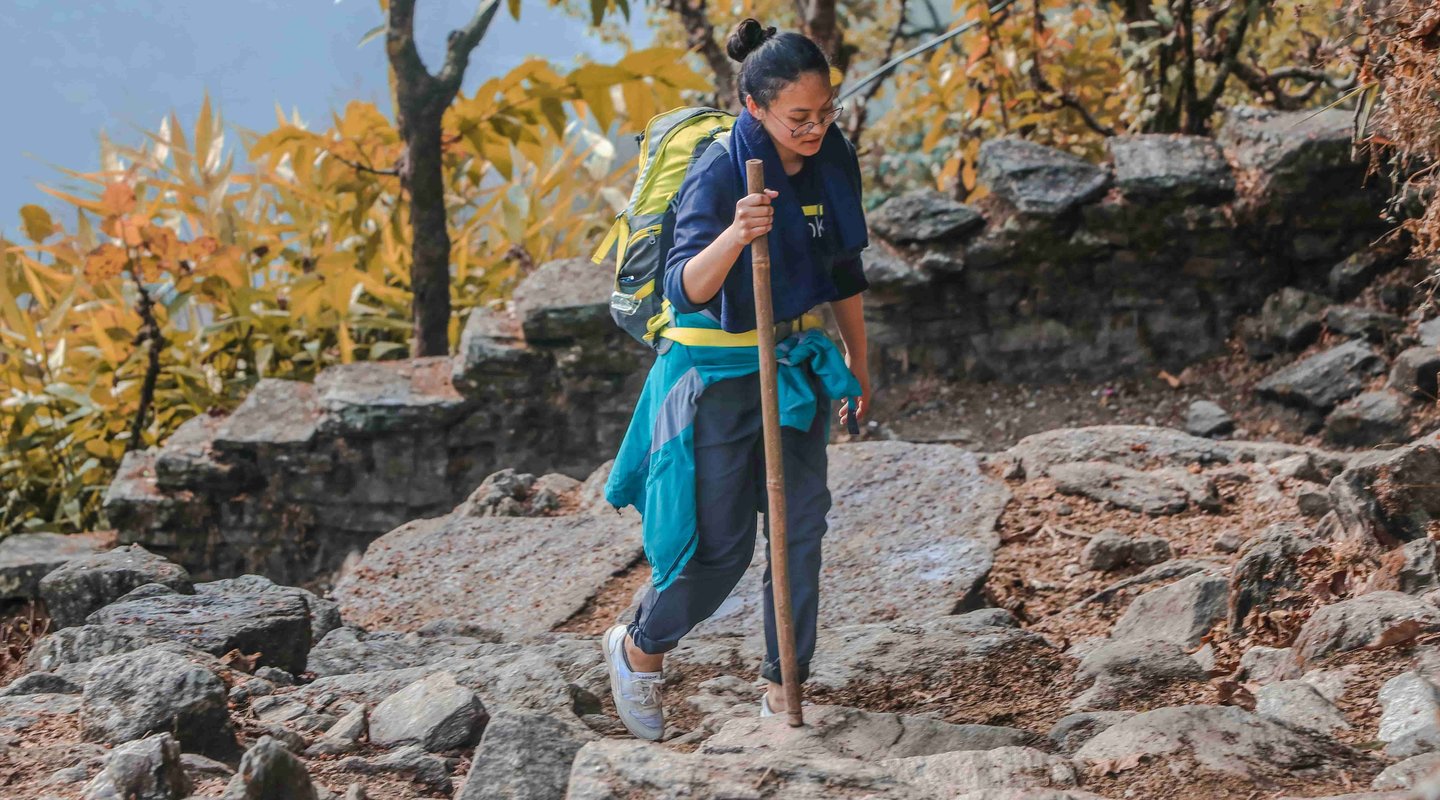Introduction:
"For just $712, the average trekker is going to tackle their Langtang Valley trek, but I did the same hike for a mere $500!" No fairy dust necessary—but just shrewd planning instead. Having spent ten years taking groups of hikers through Nepal's beautiful landscapes, I've honed the art of seeing great mountains without emptying your purse.
Concealed to the north of Kathmandu, Langtang Valley boasts snow-covered peaks, medieval monasteries, and an authentic cultural experience for a fraction of what you'll pay for more famous trails. Full of scenery but short of time! Throughout this book, I'll break down every single last penny you'll spend in 2025, from teahouse dorm bed to that well-deserved celebratory pint at the journey's end.
Why pay more for the same stunning Himalayan views? Let's cut to the chase and determine how much this trek will cost you, where to cut corners, and how to budget like a wise mountain trekker. Whether you're a tight-fisted backpacker or prefer more amenities in the high country, these trail-tested tips will save you hundreds without compromising your adventure!
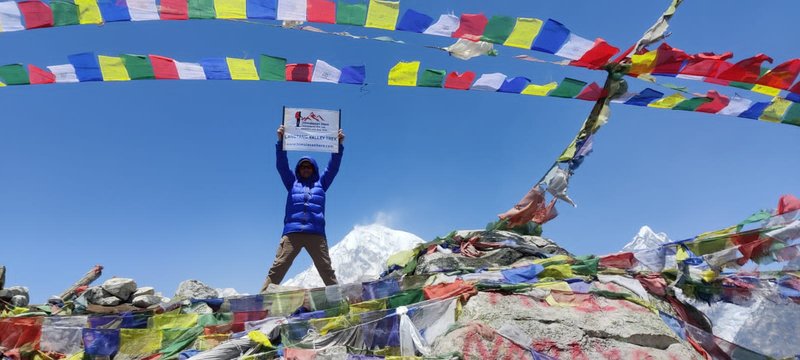
Why Langtang Valley Trek: The Hidden Value Proposition
Before jumping into cost specifics, you might wonder: why Langtang instead of other well-known Nepali treks? Easy. Langtang is good value with
- Accessibility: Just 7-8 hours from Kathmandu versus 30+ hours to get to Everest region
- Duration flexibility: Can be completed in 7-10 days, perfect for time-constrained holiday plans.
- Altitude-friendly: Highest at around 3,800m at Kyanjin Gompa (with optional higher treks), which minimizes acclimatization needs and altitude sickness dangers.
- Crowd-free experience: Offering equally stunning mountain scenery, Langtang receives only 15% of the trekkers who flock to the Everest Base Camp trek.
It is this appropriateness that makes Langtang such an affordable option for budget travelers, novices, and those looking for unspoiled experiences without the throngs of tourists.
A Step-by-Step Budget Breakdown for Langtang Valley Trek
1. Accommodation Cost: Your Mountain Homes
Teahouses (simple mountain lodges) along the Langtang trail offer simple but clean accommodation after a tiring day of trekking. The rates are straightforward:
2025 Teahouse Rates:
- Simple rooms (shared toilets): $3-5 per night
- Better rooms with views: $6-10 per night
- "Budget luxury" rooms (private toilet): $15-20 per night (limited)
Prices increase with elevation. You will pay about $2-3 more per night at higher villages like Kyanjin Gompa compared to lower elevations.
Tip: Cost-Saving Most teahouse owners will offer you free accommodation if you agree to have all meals at their establishment! This is an offer often made and will save you $30-40 on the standard trek. Just look out for the offer when you arrive.
In high season (Oct-Nov and Mar-May), rooms book up fast in the most popular villages. I always suggest having a backup plan or getting there early (before 3 PM). If you also want the detailed guide about what time to visit Langtang Valley Trek check our detailed blog.
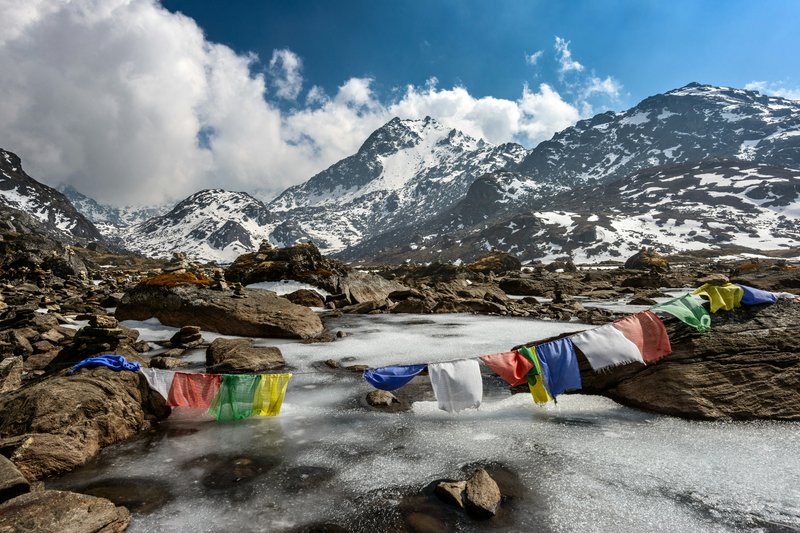
2. Meal Cost: Fueling Your Adventure
Food becomes more costly with altitude since supplies must be transported higher up on the mountain. Budget the following for 2025:
Breakfast: $3-6
- Tibetan bread and honey/jam: $3
- Porridge and fruit: $4
- Pancakes: $4-5
- Eggs and toast: $5-6
Lunch & Dinner: $5-10 per meal
- Dal Bhat (rice, lentil soup, veggies): $6-9 (refills are FREE and unlimited!)
- Fried rice/noodles: $5-7
- Pasta: $6-8
- Momos (Nepali dumplings): $6-8
- Soups: $3-5
I've approximated most trekkers to be spending $20-25 a day on food. Dal Bhat is your budget meal because you get free refills—just what you need after hiking all day!
Budget Tip: Purchase energy bars, nuts, and chocolate at Kathmandu, which is 50-70% cheaper than along the trail.
3. Drink Cost: Drink Up
Water:
- Bottled water: $1-3 per liter (doubles at altitude)
- Boiled water: $0.50-1.50 per liter
- Water purification (own tablets/filter): practically free!
Hot Drinks:
- Tea (black, milk, lemon, masala): $1-3
- Hot chocolate: $2-4
- Coffee: $2-4
Other Drinks:
- Soft drinks: $3-5
- Beer: $4-8 (please drink responsibly, as alcohol takes greater effect at altitude!)
Pro Tip: Bring a reusable water bottle with a built-in filter or water purification tablets. You'll save $40-60 worth of water on your hike and cut down on plastic use. I use the LifeStraw bottle, and it's been a total game-changer!
4. Transportation Cost: There and Back Again
Kathmandu to Syabrubesi (trek beginning):
- Public bus: $5-8 one way (6-8 hours, rough but authentic!)
- Shared jeep: $15-20 one way (5-6 hours)
- Private jeep: $120-150 one way (split between 5-7 individuals)
- Returning from Syabrubesi to Kathmandu: Same as above
Budget Tip: Budget travelers who are up for an adventure can take the public bus with no issues. Leave early (7 AM or so) from Kathmandu's Machapokhari Bus Station so you arrive before dark.
5. Guide and Porter Cost: Your Mountain Team
While technically feasible to try Langtang on one's own, a guide makes it safer and culturally more rewarding:
Guide fees:
- Licensed guide: $25-30 per day
- Assistant guide: $20-25 per day
Porter fees:
- Standard porter (15kg or less): $18-22 per day
- Porter-guide (lighter load but with simple guiding): $22-25 per day
Don't forget their accommodation and food, which you will typically provide. And 10-15% is acceptable for quality service.
Value Insight: A quality guide greatly adds to your trekking experience by translating local culture, christening mountains, finding the best teahouses, and taking care of any emergencies. For first-time trekkers especially, this feeling of security is well worth every dollar!
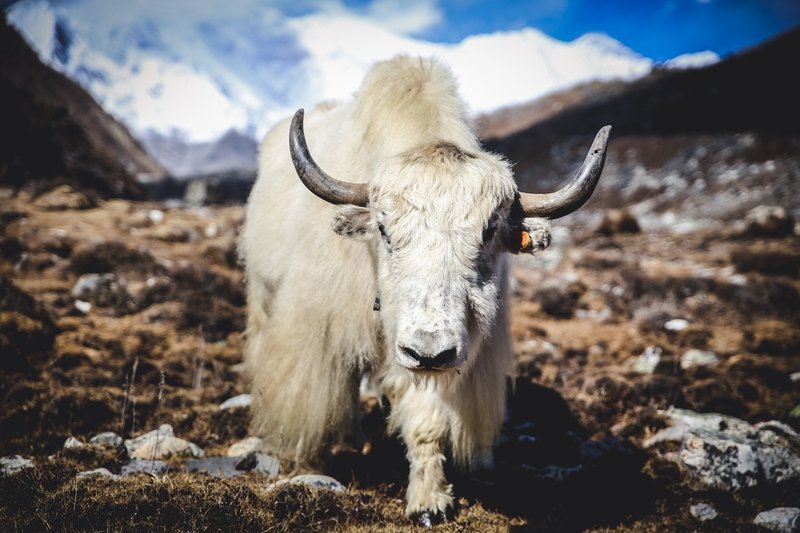
6. Permit Cost: Official Paperwork
Two permits are required for the Langtang Valley Trek in 2025:
TIMS Card (Trekkers' Information Management System):
- $10 for solo trekkers
- $5 while trekking with an agency
Langtang National Park Entry Permit:
- $30 head (a tad higher than the 2024 $25 cost)
They are either acquired by going through a trekking agency (ideally) or personally from the Kathmandu-based Nepal Tourism Board office.
Time-Saving Tip: Get passport photos prior to arrival in Nepal (2 for TIMS, 1 for park permit). This keeps you from being waylaid going around Kathmandu looking for photo services.
7. Rental Charges and Shopping: Gear Up
Rental Equipment in Kathmandu (per day):
- Sleeping bag (-10°C rated): $2-3
- Down jacket: $2-3
- Trekking poles: $1-2
- Backpack: $2-3
Shopping Options at Kathmandu:
- Warm gloves & hat: $5-15
- 3 pairs of trekking socks: $8-15
- Fleece jacket: $15-30
- Waterproof jacket: $20-60
- Hiking trousers: $15-40
Money-Saving Strategy: Bring essential items from home, but consider renting bulky gear like sleeping bags. For purchases, Thamel (Kathmandu's tourist district) has countless shops where bargaining is expected—never pay the first price! Start by offering 50-60% of the asking price and negotiate from there.
8. Miscellaneous Costs: Don't Forget These
- Hot showers: $2-5 (price increases with altitude)
- Battery charging: $2-5 per device
- Wi-Fi: $2-5 per day (spotty and not available everywhere)
- Toilet paper: $1-2 per roll (bring some from Kathmandu)
- Snacks along the way: $3-10 per day
- Basic first aid items: $10-20 total
- Tips for guide/porter: $40-100 total (depending on service quality)

Smart Planning: Download maps.me or AllTrails maps before leaving Kathmandu, as you'll have limited connectivity. Also, bring a power bank for your devices—charging points become scarce higher up.
The Seasonal Cost Factor: When to Trek for Best Value
A little-known Langtang trekking cost fact that few guides will share is how much prices vary seasonally. Here's my behind-the-scenes analysis:
Peak Season (Oct-Nov, Mar-May):
- Highest prices (everything 10-20% higher)
- Best weather and views
- More busy teahouses with less negotiating power
Off-Season (Dec-Feb):
- 10-15% cheaper prices
- Clear, cold days with occasional snow (dress warmly!)
- Less busy trails with great mountain views
- More negotiating power for lodging
Monsoon Season (Jun-Sep):
- Lowest prices (15-25% discounts available)
- Rain, leeches, and cloud-obstructed views
- Some teahouses were closed
- Bad trail conditions with landslides
Secret Value Season: Early September (when monsoon has ended) and late November (when crowds of the tourist season have left) offer fine views at lower rates—my preferred months to hike Langtang!
Digital Nomad Considerations: Working While Trekking
For the growing number of digital nomads considering trekking while staying connected, here's what you need to know about connectivity costs in Langtang for 2025:
- Mobile data: Purchase a NTC or Ncell SIM card in Kathmandu ($2-5 with 5-10GB data)
- Coverage: Spotty throughout the trek; best at Lama Hotel and Kyanjin Gompa
- Teahouse Wi-Fi: $3-5 per day where available
- Power banks: Essential! Bring at least 20,000 capacity ($20-40 in Kathmandu)
Working Tip: If you need reliable internet, budget an extra $5-10 per day to stay at teahouses with solar power and Wi-Fi, usually the more expensive options in each village.
Post-Earthquake Rebuilding Impact on Costs
Langtang was devastated during the 2015 earthquake, and rebuilding it affected current trekking and pricing. New constructions for most of the teahouses have more premium amenities than what they had in the past but are also more costly by a notch or two. It has its positives for tourism through affecting communities' rebuilding lives positively.
Some villages have "community teahouses" whose earnings go towards earthquake rebuilding. Sleeping at one may cost an additional $1-2 per night, but the funds directly go towards community rebuilding—an investment worth making in the area's future.
Responsible Trekking: Environmental Costs
Sustainable trekking isn't just good for the planet—it's often good for your wallet too. Consider these eco-friendly budget tips:
- Water purification saves money while reducing plastic waste
- Pack out what you pack in—no additional cleanup fees
- Solar chargers ($30-60 in Kathmandu) eliminate charging fees
- Biodegradable soap for washing clothes saves stream ecosystems
Some teahouses offer discounts of $1-2 for eco-conscious practices like bringing your own toilet paper or using solar chargers instead of their electricity.
5 Frequently Asked Questions about Langtang Valley Trek Cost
1. Is it cheaper to book a package tour or organize everything myself for the Langtang Valley Trek?
For Langtang specifically, solo travel will earn you a 20-30% discount. A standard 7-day Langtang package tour will set you back $700-900, while solo travel will set you back $500-700. But the first-timer prefers to go for the ease and comfort of a package, which does everything, and the surprise awaiting him. If you prefer easy planning and enjoy flexibility, go solo!
2. What's the best season to trek Langtang for budget travelers?
December-February and June-August have the lowest rates, 10-20% off on lodging and better bargaining. But the weather can be harsh (cold winter or monsoon rains). The best balance of pleasant weather and low prices is during shoulder seasons: early March, late May, early September, or late November.
3. How much extra cash should I bring for emergencies?
Always carry at least $150-200 extra in cash for emergencies. ATMs don't exist on the trail, and unexpected costs might include medication, emergency transportation, or weather delays requiring additional days. I once needed to stay two extra days due to landslides and was grateful for my cash reserve!
4. Can I reduce costs by carrying my own food?
While bringing snacks is wise, carrying all your meals isn't practical or significantly cheaper. Teahouses expect you to eat at their facilities, and cooking your own food is generally discouraged. Additionally, supporting local teahouses is part of sustainable tourism. Focus instead on negotiating accommodation deals with meal commitments.
5. Do I need travel insurance for the Langtang Valley trek, and how much does it cost?
Absolutely, yes! Travel insurance with high-altitude trekking coverage and emergency evacuation is essential. Expect to pay $50-100 for a comprehensive 2-week policy. The minimal cost provides invaluable protection—helicopter evacuations in Nepal can exceed $5,000! Look for policies covering trekking up to 5,500m (Langtang's highest point is around 4,984m at Tserko Ri).
Hidden Cost-Saving Strategies: Local Knowledge
As someone who's guided Langtang treks for years, here are my insider tips that few tourists know about:
- The Namaste Discount: Learning basic Nepali phrases and showing respect to teahouse owners often results in spontaneous discounts of 5-10%. Simple courtesy goes a long way!
- Extended Stay Benefits: Planning a rest day at Kyanjin Gompa? Mention it upfront when arriving, and many teahouse owners will offer a third-night-free deal.
- Group Negotiation Power: Even informal groups of trekkers who happen to cross paths on the trail can negotiate reduced rates by visiting teahouses in a group. I've seen 15-20% group discounts for 6+ trekkers who weren't even traveling together in the first place!
- Shoulder Season Bargaining: In early March and late November, you can typically bargain for half-price rooms if you arrive after 4 PM when owners worry about emptying their rooms.
- Photography Exchange: Trade for discounts; offer to take professional-quality photos of a teahouse for their website/social media. I have tech-savvy trekkers who've been given free accommodation in this manner!
Final Thoughts: Trek Smarter, Not Pricier
Langtang magic does not depend on expenses. My best memories on treks were the shoestring-budget ones! You can also enjoy the beautiful Himalayan views, rich cultural understanding, and sense of accomplishment of the Langtang trek on this shoestring without emptying your pocket!.
Remember: reserve book meal plan rooms in advance, carry water purification instead of buying bottled water, hike off-season, and always have some negotiating skills available. Your wallet (and the planet) will thank you!
Ready to hike the trail? Langtang Valley's summit-topped mountains and friendly Tamang hospitality invite you to your affordable 2025 holiday! Book now with Himalayan Hero Adventures for your unforgotable jourey ofLangtang Valley Trek.

